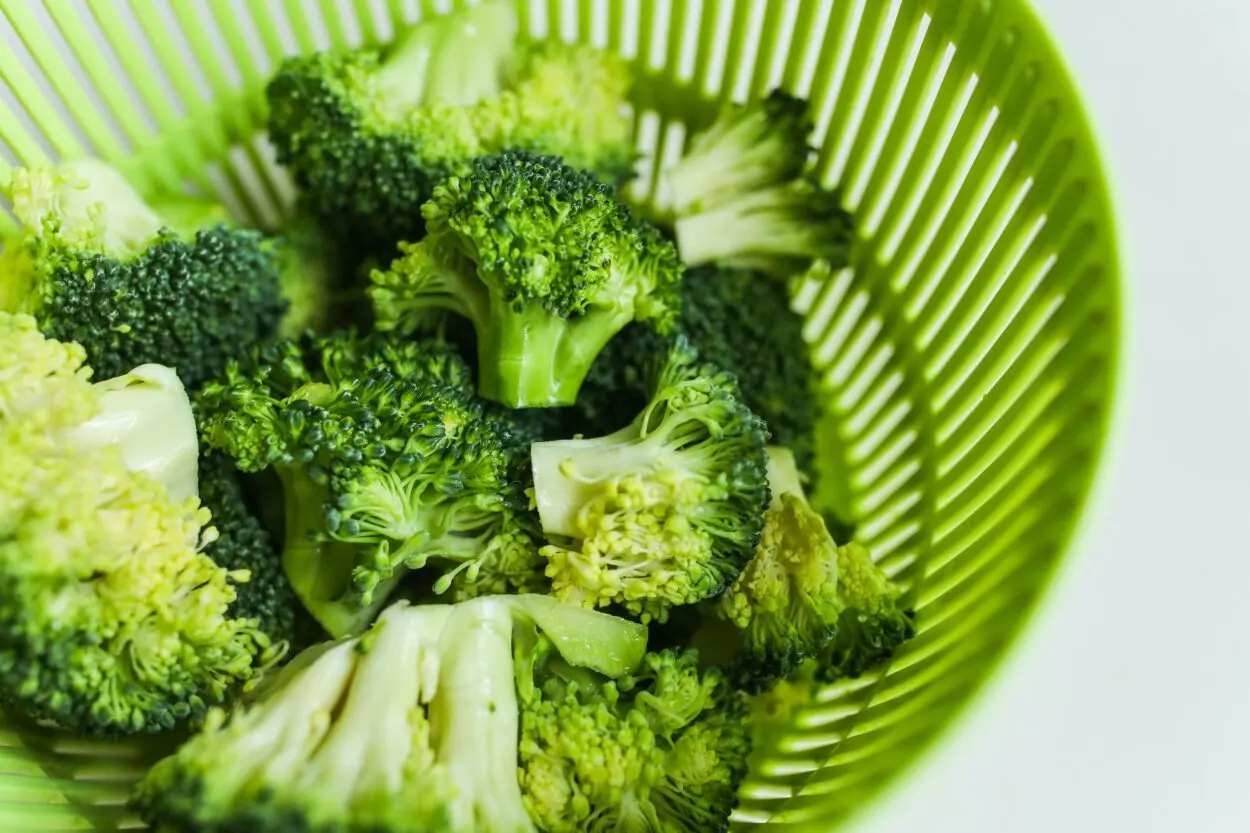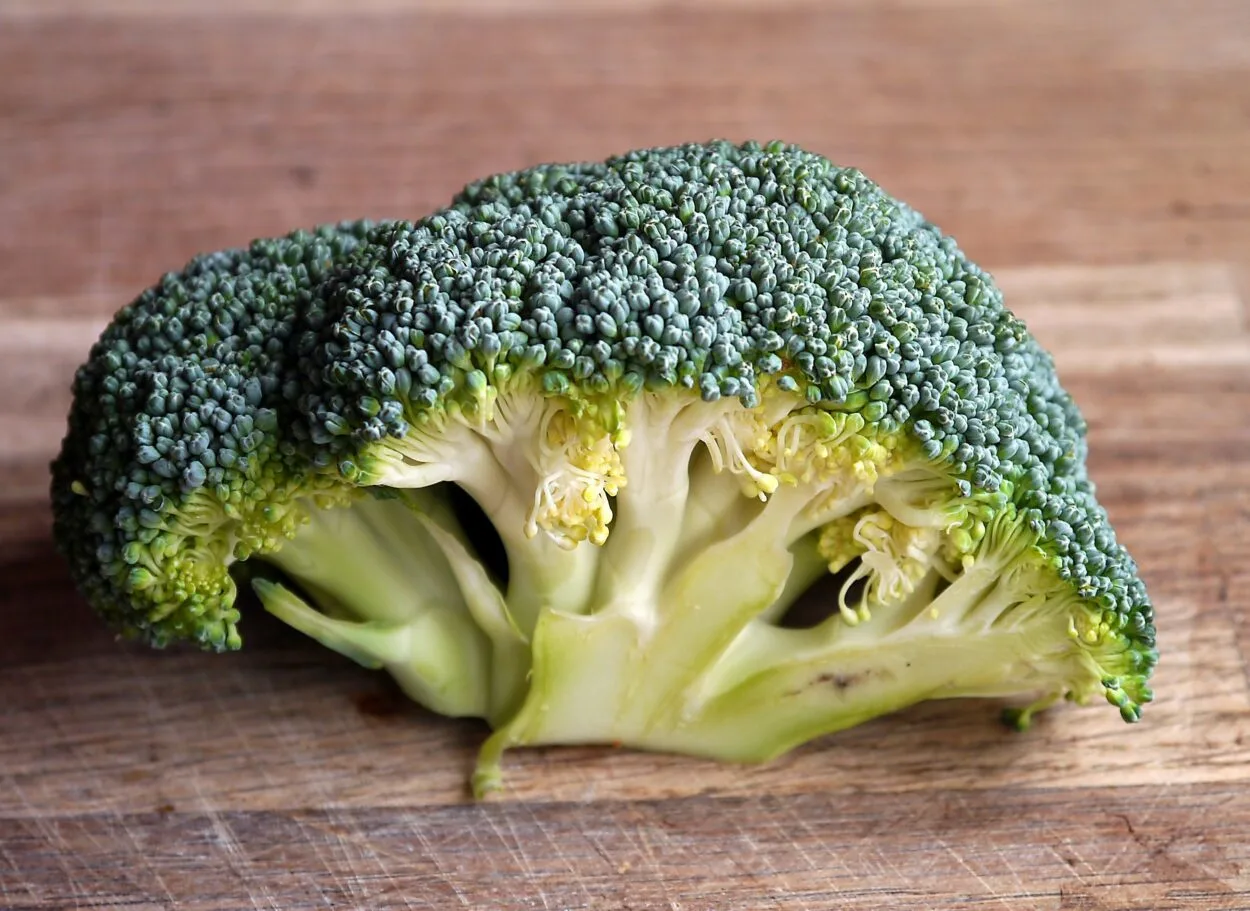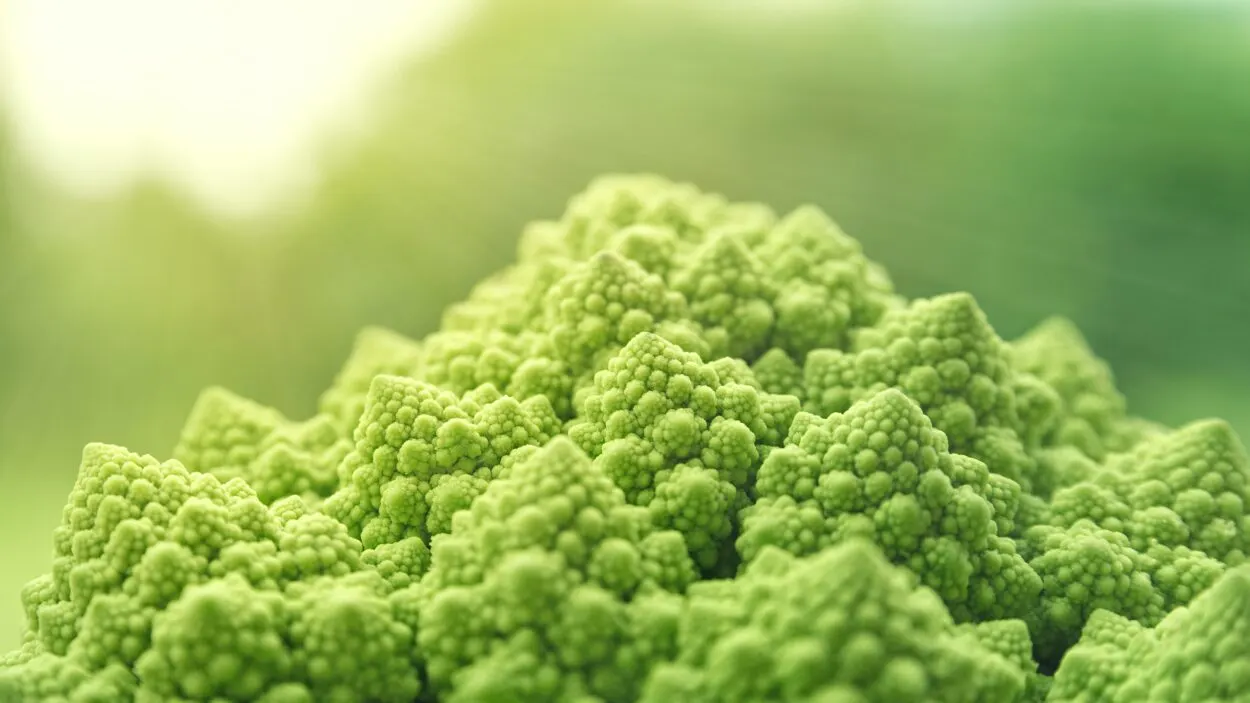Broccoli is a green vegetable that is mostly used to make organic, healthful salads. It is also occasionally used as a supplementary ingredient in restaurant-style poultry dishes.
Due to its mildly bitter flavor, some people don’t think it’s worth eating, but given its benefits, it might be worth including in your diet.
Broccoli is healthy for your eyes, promotes hormonal balance and the immune system, and contains components that fight cancer.
The spear is a chopped segment that includes both parts of the stalk and part of a floret from the crown of the head. The stems and tops, also known as florets, contain nearly the same nutrients. Crowns are the heads of stalks with their stems cut off or shortened.
With a low calorie and sodium base but a high potassium and vitamin base, broccoli is high in nutrients. Because of this, it is obviously a delight for people who like a healthy diet.
Keep reading to know more about broccoli’s nature, function, and components, as well as its advantages and disadvantages.
What Is A Broccoli?
The cruciferous vegetable broccoli is a biennial member of the Brassicaceae family.
Broccoli was once solely grown as a winter vegetable, but modern hybrids allow farmers to plant almost all year round in some regions.
It is a Mediterranean native. Ancient Italian culture known as the Etruscans, who lived in what is now Tuscany, developed it from a cabbage relative.
Try broccolini, often known as baby broccoli, which is a mix between broccoli and kale if you enjoy broccoli.
The plant has a strong stem that is encircled by leaves and on top of which grow green floral heads. A flower head is made up of numerous tiny flower heads that eventually bloom into four-petalled miniature flowers.
Benefits of Broccoli

It goes without saying that broccoli should be a regular part of your diet, and the reason for this is that it is incredibly rich in minerals and anti-inflammatory antioxidants.
A cup of broccoli weighing about 76g, according to the United States Department of Agriculture (USDA), provides 3% to 3.5% of a person’s daily requirement for calcium, 45-54% of their vitamin C requirement, and 64-86% of their vitamin K requirement.
It has a lot of soluble fiber, which helps your body remove cholesterol. This is so that bile acids in the digestive system may bind with the fiber in broccoli.
Other benefits of broccoli include:
Broccoli Spear
Broccoli that has been sliced into tiny pieces that extend from the stalk’s base to the floret is known as broccoli spears.
They are typically two to five inches long and used in a variety of cuisines or eaten raw.
Typically, broccoli is grown in a head that looks like a small tree. It has a substantial stalk that forks into smaller broccoli florets.
Broccoli is easier to wash, cook, and consume when it is cut into spears. Broccoli naturally develops into a huge head that can weigh up to a pound and measure more than six inches across.
There is a specific procedure that you should adhere to while cutting broccoli into spears.
| Steps | Description |
| Wah broccoli head | This will enable you to clean off any debris and check your broccoli for any signs of rot or mould that might require cutting away. |
| Stem Trimming | Depending on how much of the broccoli stalk is thick or broken, you should cut off the bottom 1-2 inches, maybe even more. |
| Cut in length | Cut your broccoli lengthwise from the base of the stem to the head by laying it on its side. |
| Cut into spears | This will enable you to clean off any debris and check your broccoli for any signs of rot or mold that might require cutting away. |
Broccoli Floret
The portion of broccoli that resembles small trees sprouting off from the strong, green stem is known as the florets.
You might not be able to get the perfect cut on your first try because of the thickness or placement of the florets. You can clean up your cut broccoli once the florets are entirely separated from the stalk, so don’t worry.
The broccoli heads are washed before being divided into florets that are 20/40mm or 40/60mm in diameter.
It can be steamed, added to stir-fries, or used in salad bars. The question is how. Prior to trimming and cleaning the stems, remove the floret.
Keep a pot of water boiling, and once it does, add your broccoli florets and let them blanch for one minute or longer, as needed. Florets should be added to cooled water after you remove and drain the water. Use them now, whatever you want.
Broccoli’s Crown

The heads of stalks with their stems clipped or trimmed are known as broccoli crowns. They normally have a diameter of between 4 and 8 inches when completely grown.
Typically, a medium-sized broccoli crown weighs about 12 pounds. After being divided into florets, it will provide roughly 3 cups of broccoli. Two people can be fed a single crown of broccoli as a simple side dish.
A crown or two will provide you with enough florets for roasting, your go-to ingredient for broccoli cheddar soup, or a sturdy foundation for broccoli slaw.
The broccoli head should be placed on the broccoli crown with the stalk pointing up because the broccoli crown has two florets. Cut the florets at the stem in an angular fashion using a knife.
Cut the florets at the stem at an angle towards the center of the floret head with a knife.
Difference Between A Floret, A Crown, And A Spear Of Broccoli
The parts of a broccoli plant include a crown, florets, stems, stalks, spears, and others. Each has a unique phrase and definition.
The heads (tops) of the broccoli stalk that contain the florets, steam, and other components are known as broccoli crowns. In essence, it is the entire stalk, excluding the actual stalk. Only the green and white buds are considered florals, and the spear of broccoli is a longitudinal slice of the stalk and head.
Broccoli crowns typically measure between 4 and 8 inches in diameter when completely grown. Typically, a medium-sized broccoli crown weighs about 12 pounds. After being divided into florets, it will provide roughly 3 cups of broccoli.
Broccoli florets are what remain after cutting the broccoli head or crown into pieces. It consists of a few broccoli buds that have been cut off from the crown.
Many claims that this is the component with the most flavor, and it is also the one that is most frequently utilized in recipes and everyday cooking.
Both the broccoli stalk and the spear’s longways-cut broccoli head are included. Higher portions of broccoli are typically eaten. The florets and the stalk are included in this.
Is Broccoli Healthy?
Broccoli is claimed to be a healthy plant-vegetable that is filled with nutrients and antioxidants that help prevent illness/diseases.
It tastes great when eaten raw in a salad as well. It also tastes good as a side dish. Broccoli is an excellent method to acquire all your nutrients if you are a vegetarian or vegan.
The amount of fiber in one cup of broccoli is roughly 2 grams. Lowering cholesterol levels and supporting insulin and blood sugar management for consistency, and even energy, all contribute to heart protection.
A cup of raw broccoli contains 68 grams of water as well. Your body needs water to maintain the health of its cells and organs.
Because of their capacity to neutralize carcinogens and inhibit the growth and spread of cancer cells, research has discovered that vegetables like broccoli contain natural substances connected to cancer prevention.
Alternatives To Broccoli
Cauliflower

Cauliflower is a versatile, nutritious vegetable that mostly contains water and fiber and has only a few carbs. Since it has few calories, and is high in vitamins, minerals, etc, it is considered a nutrient-dense food.
It has a high nutritional value due to the presence of numerous antioxidant substances, including glucosinolates, vitamins, phenolic compounds, and carotenoids, which are good for human health.
Generally, raw cauliflower possesses antioxidants, whereas boiling it raises indole levels. Therefore, avoid boiling cauliflower because it loses the most antioxidants.
Kale

Kale is a member of the cabbage family, which also includes collards, broccoli, and cauliflower. It is more widely consumed than ever and is a great source of vitamins and minerals.
As a leafy green with fiber, kale is excellent for promoting healthy digestion and elimination. Don’t throw away the stems because they are a great source of prebiotics, which your microbiota needs to survive.
Additionally, it contains vitamin K-12, which helps maintain the health of the arteries by preventing calcium from adhering to the walls.
Conclusion
- In addition to being tasty, broccoli is also nutritious. It is a fantastic source of protein and contains a variety of nutrients, such as vitamin C, vitamin K, iron, fiber, and potassium. As a result, broccoli is regarded as one of the foods that are most nutrient-rich.
- The topmost portion of broccoli, known as the head or crown, is where the florets and spears are located. Florets consist just of the bushy leaf portions with a minimal amount of stem to keep it together, but the spear contains both the broccoli stalk and the head, which is sliced lengthwise.
- Broccoli qualifies as one serving of vegetables and has only 15 calories in one-half cup, whether it is raw or cooked. Broccoli is a good source of carotenoids and flavonoids, two phytochemicals that work to defend your health and are found in broccoli.

